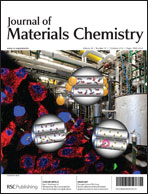A new periodic mesoporous organosilica containing diimine-phloroglucinol, Pd(ii)-grafting and its excellent catalytic activity and trans-selectivity in C–C coupling reactions†
Abstract
A new organosilane precursor has been designed via Vilsmeier–Haack


 Please wait while we load your content...
Please wait while we load your content...